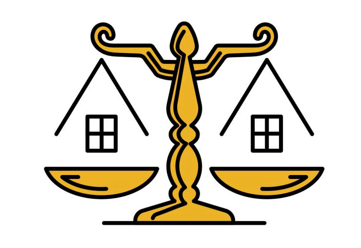Revolutionizing Tax Compliance: How Electronic Systems Improve Administration
INTRODUCTION
The Federal Inland Revenue Service (FIRS) introduced the e-tax system in partnership with the Nigeria Inter-Bank Settlement System in 2015, which marked the official start of Nigeria’s transition to an electronic system (NIBSS). Since that time, the tax system has been gradually moving to online platforms, with the creation of an online portal where Withholding Tax (WHT) credit notes and tax receipts can be viewed and downloaded as well as where the application for Tax Clearance Certificates (TCCs) for Companies can be finished. Taxpayers can also pay different taxes by withdrawing money from their bank accounts.
Regarding the submission of TCC applications by businesses, the switch to an online platform gave businesses the option to submit their yearly TCC applications while remaining at their desks. A number of trips to the FIRS office are necessary to process and ultimately issue the TCC under the original electronic method, which needed an initial online application. Nearly all of the advantages of using an online application are lost because of this demanding follow-up process.
Tax administration and compliance are critical aspects of any country’s economic framework. Governments rely on taxes to fund infrastructure, social services, and public administration. However, tax collection has historically been plagued by inefficiencies, non-compliance, and fraud. Traditional tax administration systems often suffer from cumbersome paperwork, delays, and loopholes that enable tax evasion.
With the advent of technology, electronic systems for tax administration and compliance have emerged as a game-changer. These digital solutions streamline tax collection, enhance transparency, and simplify compliance for taxpayers. From electronic filing systems to blockchain-based tax tracking, governments worldwide are adopting digital tools to improve efficiency and revenue collection.
This article explores how electronic systems are transforming tax administration, their advantages, challenges, and the future of tax compliance in an increasingly digital world.
Understanding Electronic Tax Administration Systems
What Are Electronic Tax Administration Systems?
Electronic tax administration systems refer to digital platforms and tools used by tax authorities to manage tax collection, compliance monitoring, and enforcement. These systems replace traditional manual processes with automated and integrated solutions that enhance efficiency and accuracy.
Key components of electronic tax systems include:
-
E-filing portals – Platforms where taxpayers can submit their tax returns electronically.
-
Automated tax assessment tools – AI-driven software that calculates tax liabilities based on real-time data.
-
Digital payment gateways – Secure online platforms that enable seamless tax remittance.
-
Electronic invoicing systems – E-receipts and invoices that help track business transactions for tax purposes.
Examples of Electronic Tax Systems Worldwide
Many countries have successfully implemented digital tax administration systems. Some notable examples include:
-
Estonia – One of the most advanced digital tax systems, allowing taxpayers to file their returns in minutes.
-
Ghana’s e-Tax Portal – A system designed to facilitate easy tax payments and compliance tracking.
-
Nigeria’s Integrated Tax Administration System (ITAS) – Developed by the Federal Inland Revenue Service (FIRS) to improve tax compliance and collection efficiency.
These systems have significantly reduced the burden of tax compliance while improving revenue collection.
Key Features of Electronic Tax Compliance Systems
Modern electronic tax compliance systems incorporate several features that enhance their effectiveness. Some of the most important features include:
1. Automation of Tax Filing and Payments
Electronic tax systems automate the process of tax filing, eliminating paperwork and manual errors. Taxpayers can file returns online, calculate tax liabilities automatically, and make payments through secure digital channels.
2. Integration with Financial Institutions
Most digital tax systems are linked with banks and financial institutions, enabling seamless tax deductions from accounts and instant reconciliation of payments.
3. Use of Artificial Intelligence (AI) and Blockchain
AI-driven algorithms detect anomalies in tax filings, flagging potential cases of evasion. Blockchain technology enhances transparency by ensuring that all transactions are securely recorded and cannot be tampered with.
4. Digital Invoicing and E-Receipts
Electronic invoicing systems ensure that businesses generate valid tax-compliant invoices. This reduces tax fraud and simplifies audits.
Advantages of Electronic Tax Systems
1. Reduction in Tax Evasion and Fraud
By automating tax assessment and integrating financial data, electronic systems make it difficult for individuals and businesses to underreport income or evade taxes.
2. Increased Transparency and Accountability
Digital tax platforms ensure that tax records are accurately maintained and easily accessible for audits. This minimizes corruption and promotes fair taxation.
3. Faster Processing and Reduced Administrative Burden
Traditional tax collection methods involve lengthy processing times. Electronic systems process tax returns and payments in real-time, reducing administrative costs for tax authorities.
4. Improved Taxpayer Experience
User-friendly digital platforms make tax compliance more convenient. Taxpayers can file returns, check tax liabilities, and receive automated notifications, reducing the stress associated with taxation.
Case Studies on Digital Tax Administration
1. Nigeria’s Integrated Tax Administration System (ITAS)
The Federal Inland Revenue Service (FIRS) developed ITAS to improve tax collection efficiency. The system integrates e-filing, e-payment, and digital compliance monitoring, reducing tax leakages and enhancing taxpayer convenience.
2. Ghana’s e-Tax Portal
Ghana’s e-Tax platform enables businesses and individuals to file and pay taxes online. It has significantly improved tax compliance rates and revenue collection.
3. Estonia’s Digital Tax System
Estonia is widely recognized as a leader in digital taxation. Its online tax system allows 95% of citizens to file taxes within minutes, demonstrating how technology can simplify compliance.
Challenges in Implementing Electronic Tax Systems
Despite their advantages, electronic tax systems face several challenges:
1. Cybersecurity and Data Protection Concerns
With tax records being digitized, the risk of cyberattacks and data breaches increases. Governments must invest in robust cybersecurity frameworks to protect taxpayer information.
2. Digital Literacy and Accessibility Issues
Not all taxpayers are tech-savvy, and some may struggle with online tax platforms. Additionally, regions with limited internet access may face difficulties using digital tax services.
3. Resistance to Change from Taxpayers and Officials
Many businesses and individuals resist transitioning from traditional tax systems to digital platforms due to fear of transparency, additional scrutiny, or lack of familiarity.
Legal Framework Governing Electronic Tax Compliance
In Nigeria and other jurisdictions, electronic tax administration is governed by laws that regulate digital transactions and taxation. Some key legal considerations include:
1. Nigeria’s Tax Laws and Regulations
-
Companies Income Tax Act (CITA) – Governs taxation of corporate entities.
-
Federal Inland Revenue Service Act – Establishes the framework for digital tax collection.
-
Finance Act – Frequently updated to accommodate emerging trends in digital taxation.
2. International Best Practices
Many countries adopt the OECD’s digital taxation guidelines, which promote transparency and fair taxation in a digital economy.
3. Enforcement and Penalties
Tax authorities have strict enforcement measures for non-compliance, including penalties, audits, and legal action against tax evaders.
Future of Electronic Tax Systems
The future of tax compliance is increasingly digital. Emerging trends that will shape the future of electronic tax administration include:
1. AI-Driven Tax Compliance Systems
Artificial Intelligence (AI) will play a greater role in detecting tax fraud, automating tax calculations, and improving compliance monitoring.
2. Blockchain for Secure Tax Transactions
Blockchain will enhance transparency by creating immutable records of tax transactions, reducing fraud and corruption.
3. Expanding Digital Taxation to the Informal Sector
Governments will leverage mobile payment solutions and digital identification systems to integrate informal businesses into the tax system.
Conclusion
Electronic systems for tax administration and compliance are transforming the way governments collect and manage taxes. These systems enhance efficiency, reduce fraud, and improve taxpayer experience. While challenges such as cybersecurity risks and digital literacy remain, ongoing advancements in technology will continue to drive digital tax innovation.
For businesses and individuals, adopting electronic tax systems ensures compliance with tax laws while simplifying the tax filing process. Governments must continue to invest in digital infrastructure and policies that support seamless tax administration in an evolving economic landscape.
By embracing digital taxation, we move towards a more transparent, efficient, and fair tax system that benefits both taxpayers and the economy as a whole.
NB: This article is not a legal advice, and under no circumstance should you take it as such. All information provided are for general purpose only. For information, please contact chamanlawfirm@gmail.com
WRITTEN BY CHAMAN LAW FIRM TEAM
EMAIL: chamanlawfirm@gmail.com
TEL: 08065553671, 08024230080


